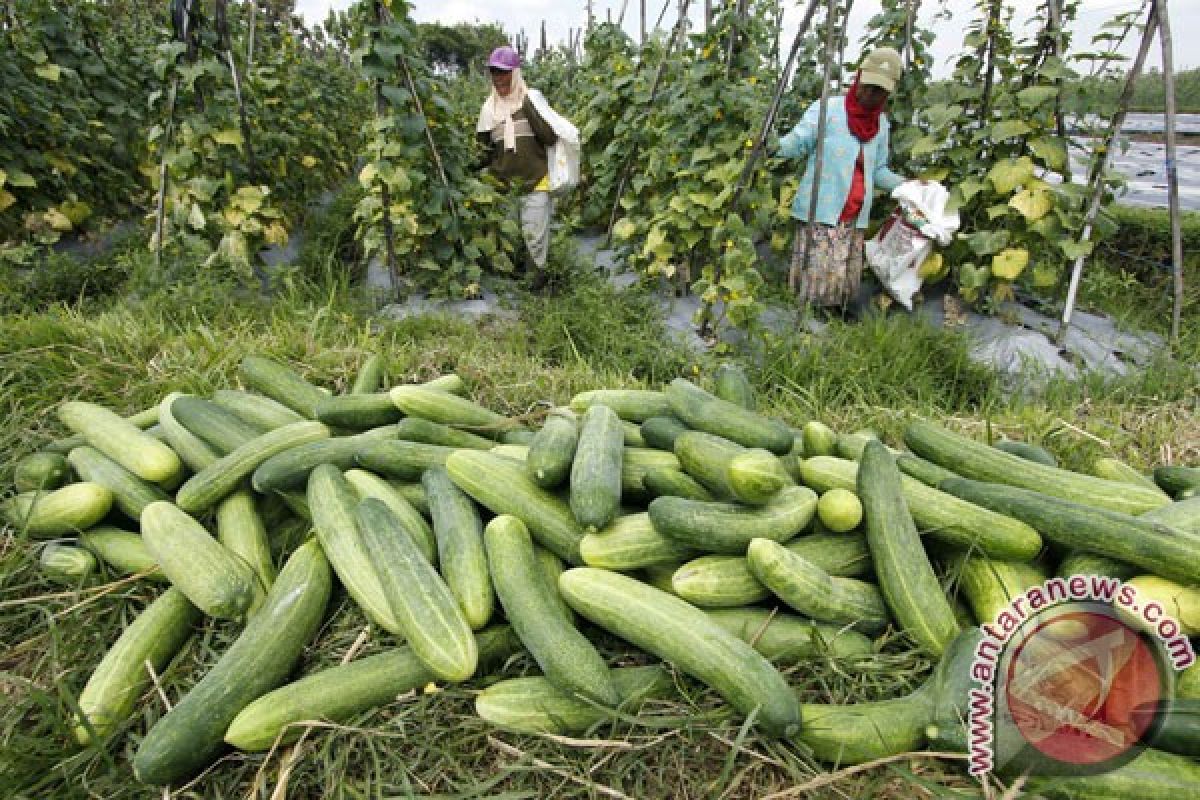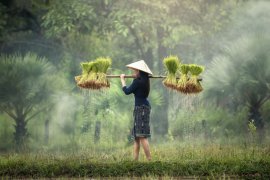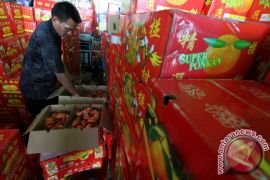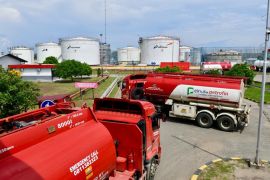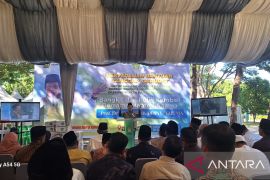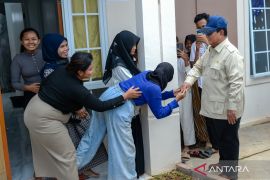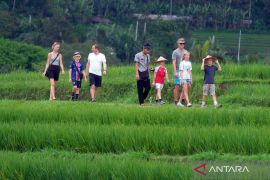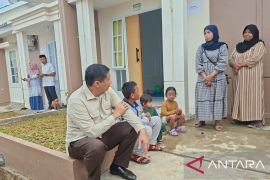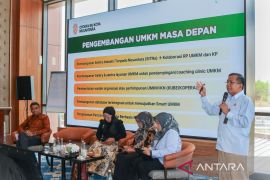"By using their courtyards, the locals can improve their standard of living."Jakarta (ANTARA News) - Residential courtyards in Indonesia are being used to cultivate food crops and to diversify food production.
Studies carried out by the National Land Affairs (BPN) show that in 2007, there were 4.1 million hectares of agricultural land in Java, but the figure dropped to 3.5 million in 2010. In fact, there has been a significant decline in the area of agricultural land due to industrial development.
To increase food production, people are now using their residential courtyards as alternative areas to develop food crops. "Courtyards can be converted into food barns," said Bambang Shergi Laksmono, a social welfare expert at the University of Indonesia (UI), on Thursday.
Indonesia has about 10.3 million hectares of land (courtyard) that can be utilized for the development of food crops, to improve the welfare of the people. Courtyards account for about 14 percent of the total agricultural land in the country.
As a food barn, a courtyard plays an important role in maintaining the resilience of food. In the past, people used to convert their yards into food barns by planting tubers.
"Tubers can be left untapped for years in a courtyard, until residents see the need to harvest them," he said.
So, courtyards can be used as alternative food sources when there is a famine or a harvest failure, he said.
The government launched a program in 2008 called the Sustainable Food House Zone (KRPL), which encourages villagers to develop food crop plantations in their yards, including vegetables such as eggplants, chillies, tomatoes, mustard greens and tubers.
Since 2008, the program has garnered the interest of 5,000 villages across the country, and the government has plans of expanding the program to include 1,700 more villages by 2013. About 80 percent of the plantations in these 5,000 villages have been successful, according to officials.
Therefore, the ministry of agriculture will select 1,700 more villages to be cultivated as KRPL regions in 2013, in an effort to speed up the country`s food diversification programs.
"The government will continue to increase the number of KRPL zones by involving groups of female farmers (KWT) that are keen on planting different food crops to produce a variety of vegetables and fruits," said Achmad Suryana, head of the Food Resilience Affairs of the Agriculture Ministry.
Apart from food cultivation, courtyards can be used to breed small animals such as fish, rabbits and chickens.
"This means that courtyards have high economic value, whose proceeds can be harvested or exploited anytime. They can also provide food for rural communities," said Bambang Shergi Laksmono of UI.
Therefore, local government institutions are now actively encouraging residents to develop different crops and to breed a variety of animals in their yards. Eko Sri Mulyani, head of the Agricultural Technology Assessment Service for the Banten province, urged the locals to cultivate a variety of plants in their yards.
Eko said that food diversification and food crop conversion have to be revived in rural and urban areas. The agriculture ministry believes that this can be achieved through self-sufficiency in soybean, sugar, meat, and by improving the welfare of the farmers.
In the meantime, the head of the agricultural service for Payakumbuh city in West Sumatra, Yufnani Away, urged villagers to cultivate oyster mushrooms in their yards, as a source of additional income.
"By using their courtyards, the locals can improve their standard of living and transform Payahkumbuh into an oyster mushroom production centre," he said.
He said that the cultivation of oyster mushrooms in Payakumbuh is relatively easy and profitable, since the city requires 500 kg of oyster mushrooms every day.
Banana trees can also be cultivated in the courtyards. This is taking place in the Sidomulyo village of the Bantul district in Yogyakarta.
"Villagers have been planting banana trees under the guidance of the village head, who is keen on transforming the village into a banana producing center," said Lasiyo, who is the coordinator of the banana plantations in Bantul.
The cultivation of food crops in courtyards in various parts of the country, is part of the government`s efforts to expand its Sustainable Food House Zone (KRPL) program. This program has been successful. According to the Agriculture Minister, Suswono, about 80 percent of the food crops cultivated in courtyards across 5,000 villages have been successful.
This program has improved the standard of living of many families. Apart from providing food, this program has reduced household expenditure by between Rp200,000 and Rp500,000 per month, the minister noted.
"Households can reduce their expenses with home-grown vegetables. The program will also be adopted by the Food and Agriculture Organization (FAO)," Suswono stated.
Suswono highlighted the benefits of the program to delegates from eight developing countries (D-8), during a meeting on food security affairs in Senggigi, West Nusa Tenggara (NTB), last October.
"This program not only addresses food scarcity, but tackles the problem of climate change too," Suswono added.
(T.A014/INE/KR-BSR/H-YH)
Reporter: by Andi Abdussalam
Editor: Priyambodo RH
Copyright © ANTARA 2012
